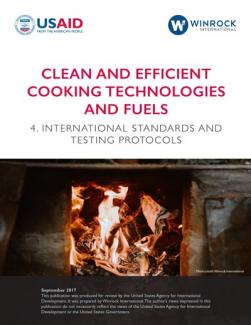Clean and Efficient Cooking Technologies and Fuels Toolkit
Standards and testing help stakeholders evaluate product performance, safety and quality, but they also encourage manufacturers to improve product performance for competitive advantage in marketplace.
Untested “improved” stoves can have higher emissions and/or lower efficiency than the traditional options they are meant to replace, and promoting inadequate technologies can reduce or reverse expected project impacts, and also spoil the market for future higher quality technologies. The use of cookstove standards and testing can help ensure programs are able to meet their impact goals.
Best Practices
- Find out what test results already exist for cooking technologies and fuels on the market for your target consumers – the Alliance’s Clean Cooking Catalog is a great starting point. It includes test results for various technologies searchable by country.
- Compare these results with international cookstove standards to ensure your choices meet performance criteria established by the funding agency or local government.
- Undertake in-country testing of the cookstoves you plan to promote, to ensure that they perform well with local foods and fuels.

